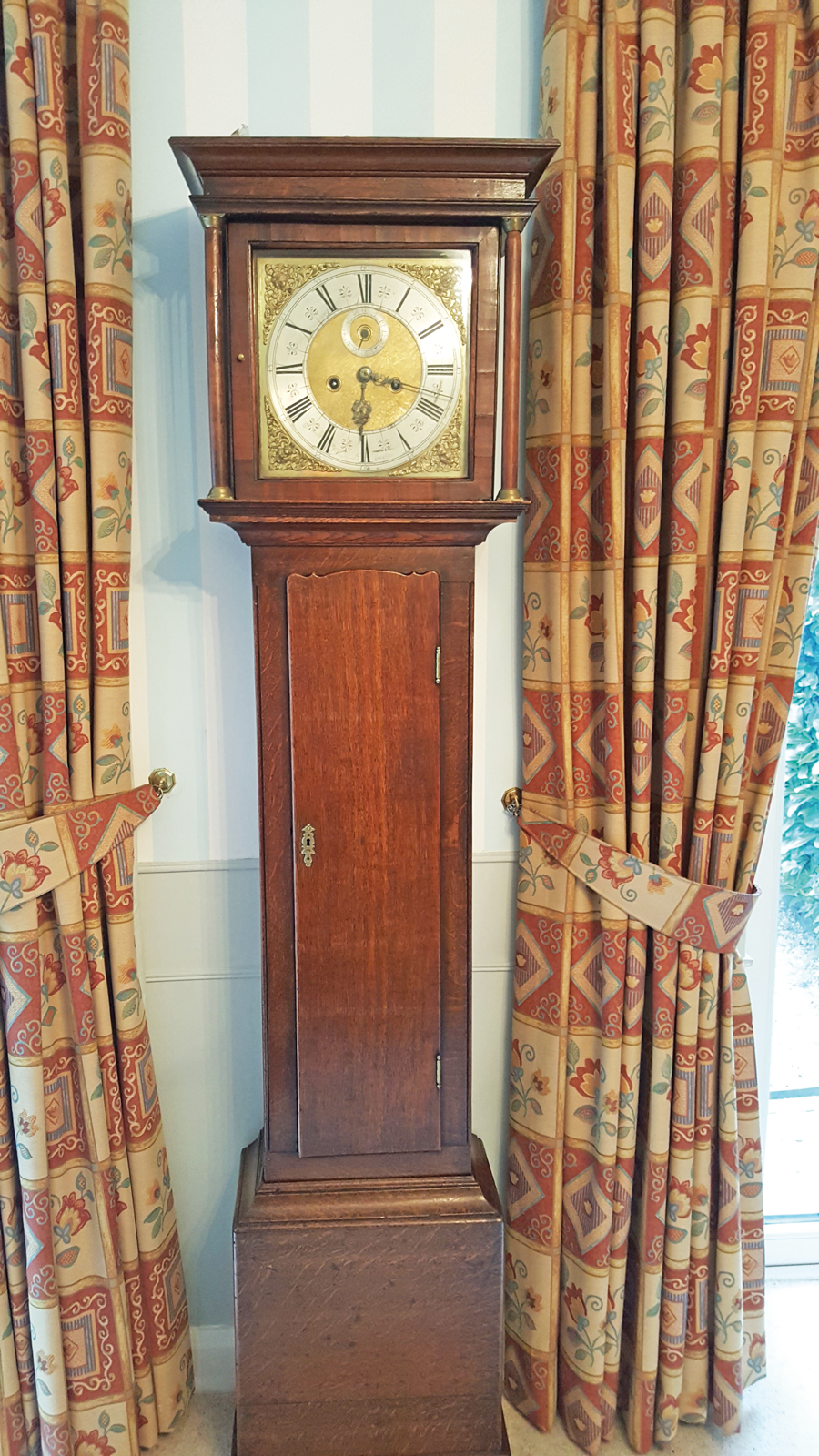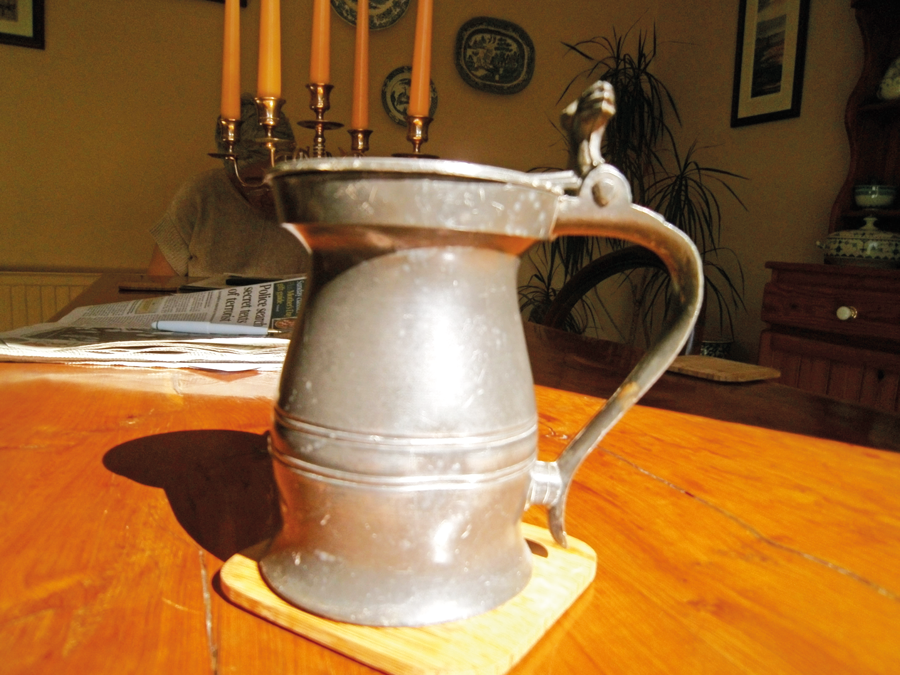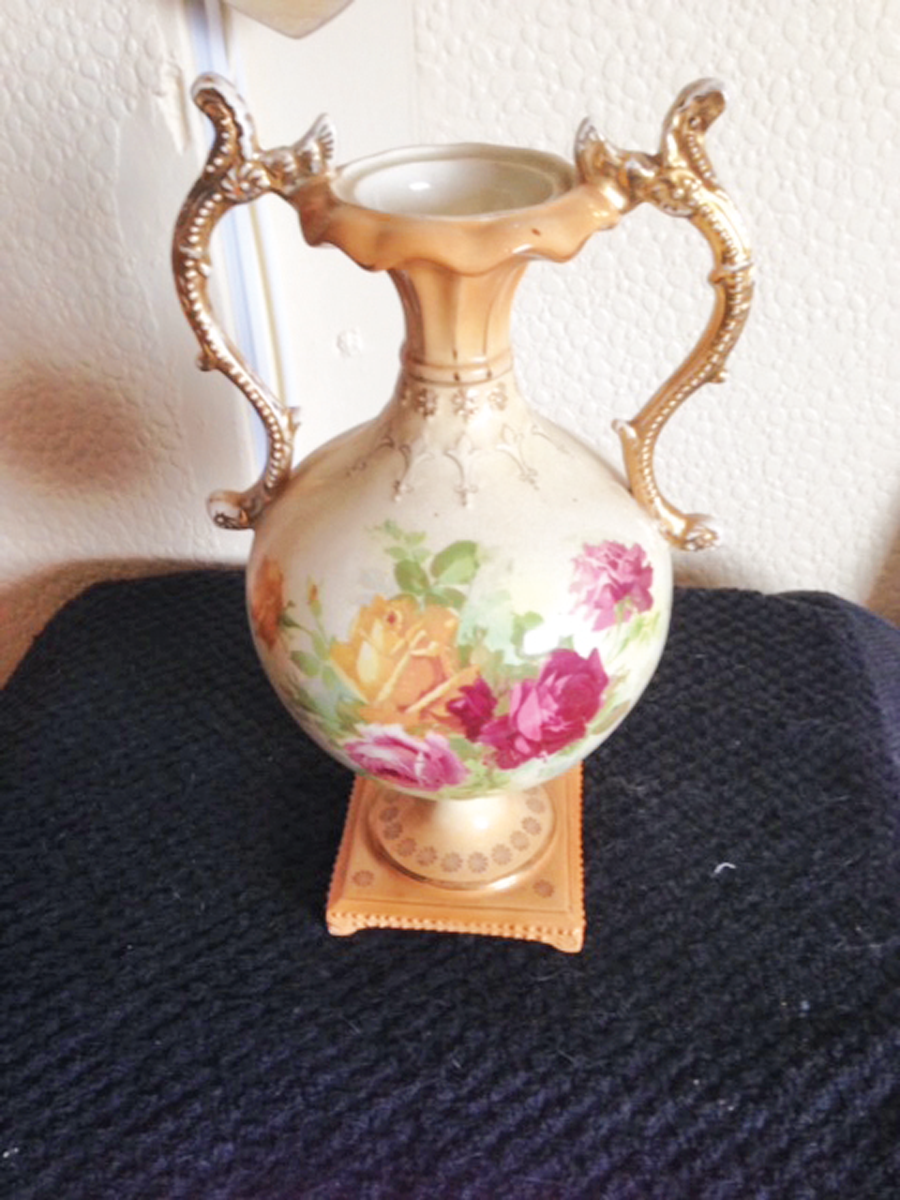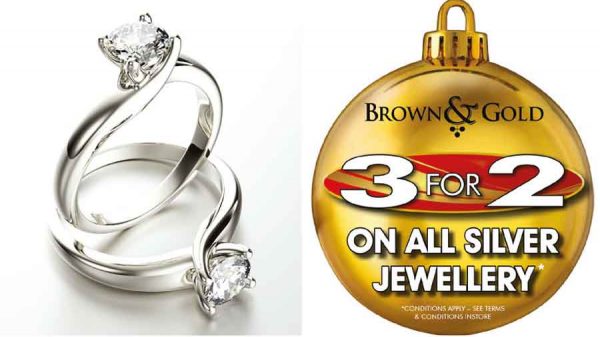Dear Gary
I have attached a couple of photos of a metal tin that once belonged to my grandmother and which I believe was her father’s. Would it be possible to tell me where it could have come from and what it is made of please?
My great grandfather was born in 1855 and I have a couple of photos of him when he was in one of the South African Boer wars. Don’t think it was the 1901-2 war because he would have been quite old by then and Forces War records have tried to identify his uniform and they also think it’s an earlier war. He brought back a kaffir belt, which I have now, but it’s the tin that intrigues me. I remember when I first got it (1958 when my grandma died) it smelt a bit of metal polish. It is lined with a green cloth. Underneath there is something that looks like hallmarks. I started to clean it but stopped as it looked like I was scratching it.
Hi,
Thank you for your email. Although your great grandfather was in South Africa, this metal box is not from there. I am pleased you did not continue to polish it, as it would have taken most of the value away. This type of box was made in the Meiji period (1868 – 1912) in Japan, although China also made them. It is difficult to decipher the marks underneath from your image, which could make a difference to the value according to the maker. Your box appears to be made of bronze. The more expensive boxes were quite often decorated with enamel, gold or silver. What a wonderful memory of your great-grandfather, and together with the kaffir belt, it is priceless family history.
Hello Gary
I have a longcase clock that I would like valuing. It says on the clock face Windmills London.
Tthanks, Andrew

Dear Andrew,
Thank you for your email. Your clock is a brass faced longcase clock with a silver chapter ring made by Joseph Windmills of London. Joseph and his son Thomas produced a large variety of clocks from 1671 – 1737 including longcase, wall, mantle and carriage clocks as well as pocket watches and were amongst the finest clockmakers of their time.
However the quality of the mahogany case does not reflect the quality of the clock movement and it is possible that the clock was put into a later case. I would need to see it to verify that.
The value also depends greatly on whether the clock movement is 30 hours or 8 days. An 8 day clock has 2 winding holes in the face and 2 weights each independently attached to the cogs. Some 30 day clocks have dummy second weights, and so again that would need to be seen to verify it.
Longcase (grandfather) clocks have declined in popularity recently and that has been reflected in their value. Your clock could be worth between £800 – £1500 depending on the movement and more if it is in an original case.
Hi Gary
I’ve attached photos of a pewter tankard which I rather like but am wondering if it is in fact worth anything. The tankard is 8.5 cm diameter and 11.5 cm tall. There is a small dent in one side. I approached the Pewter Society to see if they could give me any information (they don’t do valuations) and I’ve included their reply.
“This is a genuine period piece of English pewter made by a pewterer whose touch we have recorded but about whom we know very little. We have seen a porringer and a small funnel with his touch so this is a lovely find. He would be working from 1698 into the early years of the 18th century. It is a pint measure with a bud thumb piece and if you ever want to part with it just let me know!”
Regards Colin Parlor

Dear Colin,
Thank you for your email and it was interesting to read the information provided by the Pewter Society.
We also thought it would be interesting to readers to know that the first English pewter is Romano-British and dates back as far as the year 400 B.C. Then suddenly, for no apparent reason, this delightful alloy, comprising 90 per cent Cornish tin and 10 per cent lead, copper or antimony fell out of favour and did not make its re-appearance until the 14th century. Pewter tankards began to make an appearance during the 16th century.
In terms of value, the size does matter and is reflected in the price. Larger tankards can command a higher price. Depending on the maker’s name and its age we would expect this to sell for several hundred pounds, subject to viewing the damage.
Hi Gary
Noticed your page in the Yorkshire Reporter and have heard you numerous times on the radio. We have two identical vases and know absolutely nothing about them, wondered if you could tell me anything about them please?

Thank you for your email.
Your pair of vases appears to be Victorian in age and may originally have had lids. They are copies of Royal Worcester vases. Many companies made this style of vase from the Victorian era to the 1930’s.
Royal Worcester china with this type of colouring and flower pattern is known as ‘blush’. The most desirable hand painted patterns on Royal Worcester vases are fruit and cattle and there is still a big collectors market for those.
Your vases are not too collectable at the moment and would sell for under £100.






